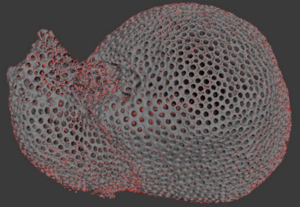Abstract

Designing low end-to-end latency system architectures for virtual
reality is still an open and challenging problem. We describe the design,
implementation and evaluation of a client-server depth-image
warping architecture that updates and displays the scene graph at
the refresh rate of the display. Our approach works for scenes consisting
of dynamic and interactive objects. The end-to-end latency
is minimized as well as smooth object motion generated. However,
this comes at the expense of image quality inherent to warping techniques.
We evaluate the architecture and its design trade-offs by
comparing latency and image quality to a conventional rendering
system. Our experience with the system confirms that the approach
facilitates common interaction tasks such as navigation and object
manipulation.
Publication
- Smit, F. A., van Liere, R., Beck, S., Fröhlich, B.
An Image-Warping Architecture for VR: Low Latency versus Image Quality
IEEE Virtual Reality Conference 2009 (VR 2009), pp 27-34, 2009.
[preprint] - Smit, F.A., van Liere, R., Froehlich, B.
An Image-Warping VR-Architecture: Design, Implementation and Applications (Honorable Mention Award (Runner-up Best Paper))
ACM Symposium on Virtual Reality Software and Technology (VRST), Bordeaux, France, pp. 115-122, October 2008
